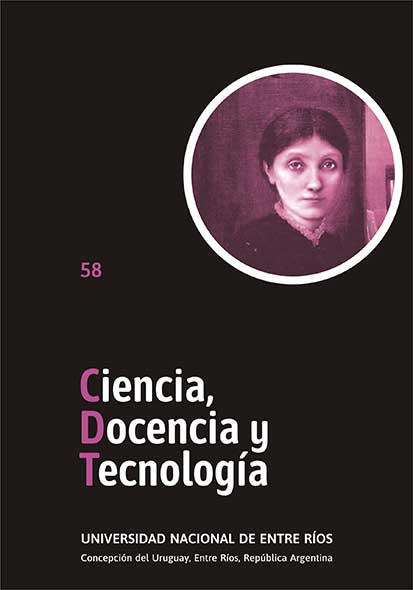Storage of chicken nuggets with low sodium content and formulated with wheat fiber
DOI:
https://doi.org/10.33255/3058/436Keywords:
nuggets de pollo, fibra de trigo, bajo en sodio, conservación en congelaciónAbstract
Chicken nuggets are snacks that are kept in frozen storage. A healthier food would be made available by making nuggets with dietary fiber and low sodium. Rancidity processes start quickly in products with minced meat, and a sodium reduction could induce microbial developments. This work evaluates the effect of the incorporation of wheat fiber on the frozen conservation of nuggets low in sodium for twelve months. A batch was prepared with 0 % wheat fiber and 1.6 % NaCl (standard formulation), and another with 2 % fiber and 0.8 % NaCl. TBARS, microbiological counts and sensory evaluation were determined. Data was analyzed by anova. Nuggets with 2 % fiber and reduced in sodium (0.8 % NaCl) showed no changes in tbars and microbiological counts or in the flavor and aroma associated with oxidative rancidity during freezing conservation, showing a similar behaviour to that of nuggets with the standard formulation.
Downloads
References
ABERLE, E.; FORREST, J.; GERRARD, D.; MILLS, E.; HELDRICK, H.; JUDGE, M. et al. (2001). Principles of Meat Science. 4º ed. Iowa: Kendall/Hunt Publishing Co.
AMERICAN PUBLIC HEALTH ASSOCIATION, American Water Works Association and Water Environment Federation (1999). SM 3030 E Nitric Acid Digestion, Preliminary treatment of samples. En Standard Methods for the Examination of Water and Wastewater. Washington DC: APHA
AOAC (2007). Official methods of analysis. Arlington VA: Association of Official Analytical Chemists
ARIHARA, K. (2006). Strategies for designing novel functional meat products. En: Meat Science, 74: 219-229.
BONATO, P.; PERLO, F.; TEIRA, G.; FABRE, R.; KUEIDER, S. (2006a). Características texturales de nuggets de pollo elaborados con carne de ave mecánicamente recuperada en reemplazo de carne manualmente deshuesada. En: Ciencia, Docencia y Tecnología, 32: 219-239
BONATO, P.; PERLO, F.; TEIRA, G.; FABRE, R.; KUEIDER, S. (2006b). Nuggets formulados con carne de ave mecánicamente recuperada y lavada: estabilidad durante el almacenamiento en congelación. En: Ciencia y Tecnología Alimentaria, 5: 112-117.
BONATO, P.; PERLO, F.; FABRE, R.; TEIRA, G. TISOCCO, O.; TITO, B. (2014). “Quality characteristics of chicken nuggets with reduced amounts of sodium chloride and added dietary fiber”. En: 60th International Congress of Meat Science and Technology, 17-22 August 2014, Uruguay
BRITOS, S.; SARAVÍ, A.; CHICHIZOLA, N.; VILELLA, F. (2012). Hacia una alimentación saludable en la mesa de los argentinos. Buenos Aires: Orientación Gráfica Editora.
BUSS, D.; TYLER, H.; BARBER, S.; CRAWLEY, H. (1987). Manual de Nutrición. Zaragoza: Ed. Acribia.
CASTAÑOLA, J.; MAGARIÑOS, M.; ORTIZ, S. (2004). Patrón de ingesta de vegetales y frutas en adolescentes en el área metropolitana de Buenos Aires. En: Archivos argentinos de pediatría, 102: 265-270.
CÓDIGO ALIMENTARIO ARGENTINO [en línea]. Buenos Aires, Administración Nacional de medicamentos, alimentos y tecnología médica. Recuperado de: http://www.anmat.gov.ar/alimentos/normativas_alimentos_caa.asp [19 Febrero 2016].
DAS, A.; NATH, D.; KUMARI, S.; SAHA, R. (2013). Effect of fermented bamboo shoot on the quality and shelf life of nuggets prepared from desi spent hen. En: Vet World, 6(7): 419-423.
DESMOND, E. (2006). Reducing salt: a challenge for the meat industry. En: Meat Science, 74: 13-18.
GUARDIÃ, M.; GUERRERO, L.; GELABERT, J.; GOU, P.; ARNAU, J. (2006). Consumer attitude towards sodium reduction in meat products and acceptability of fermented sausages with reduced sodium content. En: Meat Science, 73: 484-490.
GUERRA, M.; MARTÍN, M.; VALLADARES, C.; DE HOMBRE, R.; BERRERO, E. (1997). Algunas características de los nuggets de pollo. En: Alimentaria, 34(282), 89-92.
HERMANSEN, K. (2000). Diet, blood pressure and hypertension. En: British Journal of Nutrition, 83, Suppl. 1: S113-S119
ICMSF (International Commission on Microbiological Specifications for Foods) (2004). Microorganismos de los alimentos. 7. Análisis microbiológico en la gestión de la seguridad alimentaria. Zaragoza: Ed. Acribia.
INSTITUTE OF MEDICINE OF THE NATIONAL ACADEMIES (2010). Strategies to Reduce Sodium Intake in the United States, ed. by Henney JE, Taylor CL and Boon CS. Washington DC: The National Academies Press
KINGSTON, E.; MONAHAN, F.; BUCKLEY, D.; LYNCH, P. (1998). Lipid oxidation in cooked pork as affected by vitamin E, cooking and storage conditions. En: Journal of Food Science, 63: 386-389.
LAI, S.; GRAY, J.; SMITH, D.; BOOREN, A.; CRACKEL, R. & BUCKLEY, D. (1991). Effects of oleoresin rosemary, tertiary butylhydroxyquinone and sodium tripolyphosphate on the development of oxidative rancidity in restructured chicken nuggets. En: Journal of Food Science, 56: 616-620.
LEY NACIONAL DE PROMOCIÓN DE LA REDUCCIÓN DEL CONSUMO DE SODIO EN LA POBLACIÓN. Ley 26.905. Boletín Oficial, 16 de diciembre de 2013. Recuperado de: http://www.infojus.gob.ar/legislacion/ley-nacional-26905-promocion_ reduccion_consumo_sodio.htm [Disponible en: 19 feb. 2016].
LINNEMANN, A.; BENNER, M.; VERKERK, R.; VAN BOEKEL, M. (2006). Consumer-driven food product development. En: Trends in Food Science & Technology, 17: 184-190.
MARSH, A. (1983). Processes and formulation that affect the sodium content of foods. En: Food Technology, 37:45-49.
MINISTERIO DE SALUD, Dirección de Promoción de la Salud y Control de Enfermedades No Transmisibles. (2015). Menos Sal, más vida. Recuperado de: http://www.msal.gob.ar/ent/index.php/informacion-para-ciudadanos/menos-sal--vida [10 Diciembre 2015].
MITSUMOTO, M.; GRADY, M.; KERRY, J.; BUCKLEY, J. (2005). Addition of tea catechins and vitamin C on sensory evaluation, colour and lipid stability during chilled storage in cooked or raw beef and chicken patties. En: Meat Science, 69: 773-779.
MURPHY, S.; GILROY, D.; KERRY, J.; BUCKLEY, D.; KERRY, J. (2004). Evaluation of surimi, fat and water content in a low/ no added pork sausage formulation using response surface methodology. En: Meat Science, 66: 689-701.
PERLO, F.; BONATO, P.; TEIRA, G.; FABRE, R.; KUEIDER, S. (2006). Physicochemical and sensory properties of chicken nuggets with washed mechanically deboned chicken meat. En: Meat Science, 72: 785-788.
POLIZER, Y.; POMPEU, D.; HIRANO, M.; ALVARENGA FREIRE, M.; TRINDADE, M. (2015). Development and evaluation of chicken nuggets with partial replacement of meat and fat by pea fibre. En: Brazilian Journal of food technology, 18: 62-69.
RIVELLESE, A.; RICCARDI, G.; GIACCO, A.; POSTIGLIONE, A.; MASTRANZO, P.; MATTIOLI, P. (1983). Reduction of risk factors for atherosclerosis in diabetic patients treated with a high-fiber diet. En: Preventive Medicine, 12(1): 128-132.
ROSMINI, M.; PERLO, F.; PÉREZ-ALVAREZ, J.; PAGÁN-MORENO, M.; GAGO-GAGO, A.; LÓPEZ-SANTOVEÑA, F et al. (1996). TBA test by an extractive method applied to pâté. En: Meat Science, 42: 103-110.
RUUSUNEN, M.; VAINIONPAA, J.; PUOLANNE, E.; LYLY, M.; LAHTEENMAKI, L.; NIEMISTO, M. et al. (2003). Effect of sodium citrate, carboxymethyl cellulose and carrageenan levels on quality characteristics of low-salt and low-fat bologna type sausages. En: Meat Science, 64: 371-381.
SCHNEEMAN, B. (1998). Dietary fiber and gastrointestinal function. En: Nutrition Research, 18(4): 625-632.
SOFOS, J. 1984. Antimicrobial effects of sodium and other ions in foods: a review. En: Journal of Food Safety, 6:45-78.
TANG, S.; KERRY, J.; SHEEHAN, D.; BUCKLEY, J.; MORRISSEY, P. (2001). Antioxidative effect of added tea catechins on susceptibility of cooked red meat, poultry and fish patties to lipid oxidation. En: Food Research International, 34: 651-657.
THATCHER, F. and Clark, D. (1973). Análisis Microbiológico de los Alimentos. Zaragoza: Editorial Acribia.
VAN VLIET, B.; CAMPBELL, N. (2011). Efforts to Reduce Sodium Intake in Canada: Why, What, and When? Review. En: Canadian Journal of Cardiology, 27: 437-445.
WEISS, J.; GIBIS, M.; SCHUH, V.; SALMINEN, H. (2010). Advances in ingredient and processing systems for meat and meat products. En: Meat Science, 86: 196-213.
Downloads
Published
How to Cite
Issue
Section
License
The authors retain the copyright and grant the journal the right to be the first publication of the work, as well as licensing it under a Creative Commons Attribution License that allows others to share the work with an acknowledgment of the authorship of the work and publication initial in this magazine. All content is published under the Creative Commons 4.0 international license: Attribution-Non-Commercial-Share Alike.






